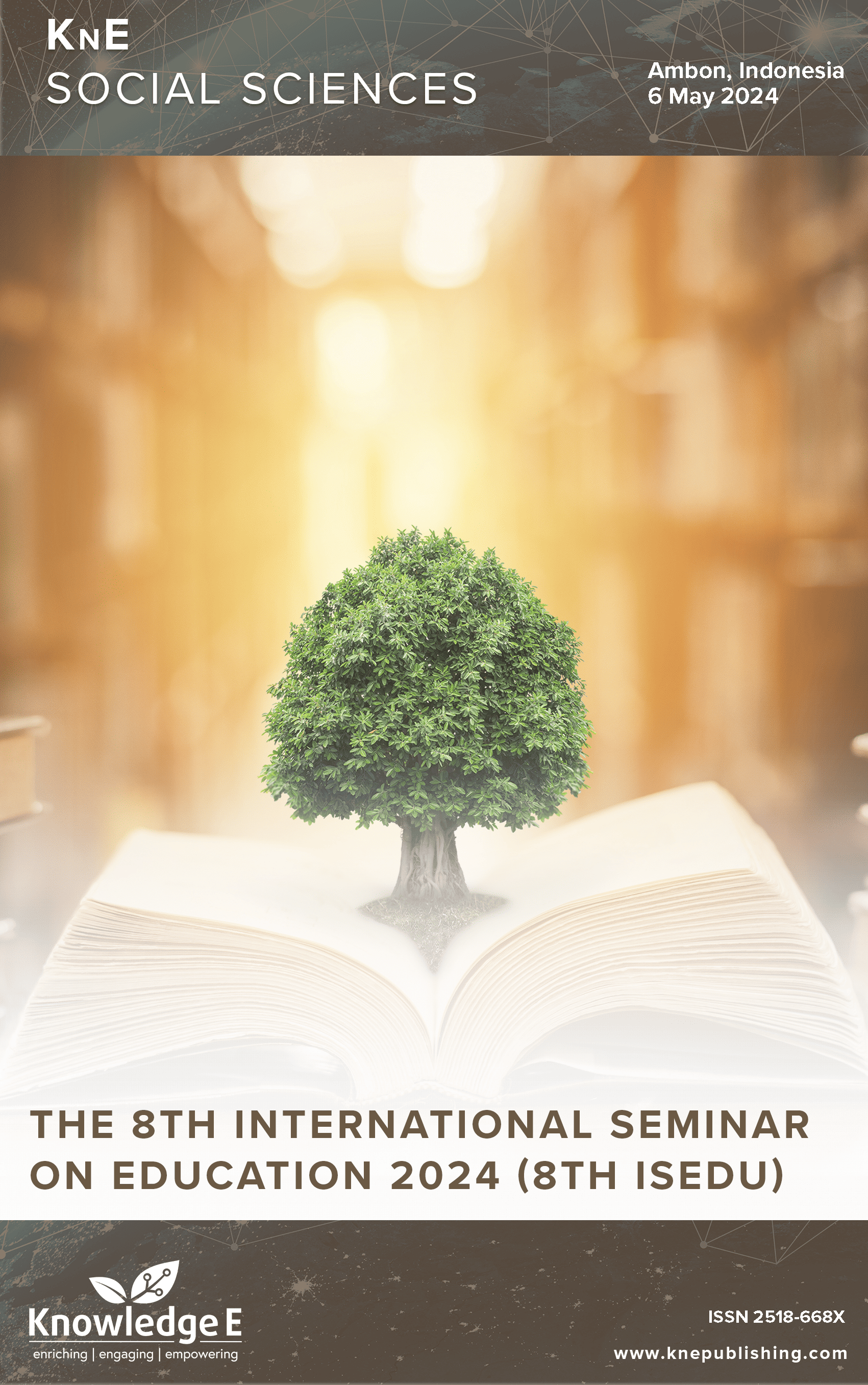Reciprocal Teaching Style and Motivation in Improving Learning Outcomes of Deep Foot Passing in Football Courses
DOI:
https://doi.org/10.18502/kss.v9i31.17620Abstract
Teaching style is one of the supporting factors for success in learning. Every teacher (teacher/lecturer), must pay attention and choose a teaching style that is in accordance with the material that will be given to students. It is known that there are problems in Penjaskesrek students at Serambi Mekkah University, including the low average score of students in football courses. Based on the results of the analysis, this happens because students underestimate this course, so it looks like students are not excited and can even be categorized as less motivated. The formulation of the problem in this study is whether there is an effect of reciprocal teaching style and motivation on improving learning outcomes of deep foot passing in football courses. This study aimed to determine the effect of reciprocal teaching style and motivation on improving learning outcomes of deep foot passing in football courses. This research is an experimental research, with a population of 40 students. The sampling technique in this study is total sampling. Based on the results of the study, it was found that there was an effect of the reciprocal learning model and motivation on improving the learning outcomes of passing the inner leg in soccer courses, namely the high motivation group, the average pre-test 46.4 increased by 14.95 so that it became an average of 61.35. While, the low motivation group, the pre-test average of 46.7 increased by 13.85 so that it became an average of 60.55. In conclusion, to improve the learning outcomes of passing in football, especially inner foot passing, students who have high or low motivation can use a reciprocal learning model.
Keywords: reciprocal, passing, football
References
Pratana DY, Soegiyanto K. Soekardi. Pengaruh Metode Pembelajran Eksplorasi dan Kelincahan Siswa terhadap Hasil Belajar Permainan Sepak Bola Siswa Kelas VII di MTS Negeri 2 Kudus. J Phys Educ Sport. 2015;4(1):64–71.
Keith D. Organizational Behavior–Human Behavior at Work (13th Editi). New Delhi: Mcgraw Hill Company; 2010.
Dyson B. Quality physical education: a commentary on effective physical education teaching. Res Q Exerc Sport. 2014 Jun;85(2):144–52. DOI: https://doi.org/10.1080/02701367.2014.904155
Nurdyansyah, Fahyuni EF. Inovasi Model. Nizmania Learning Center. Sidoarjo. Nizamial Learning Center; 2016. 190 pp.
Ahmad E, Tangkudung J, Wijaya YSK, Widiastuti. Motivasi Belajar Siswa Smk N 1 Payakumbuh Dalam Pembelajaran Renang. 2018;6–13. DOI: https://doi.org/10.25299/sportarea.2018.vol3(1).1433
Thobroni M. Perkembangan Kreativitas Anak (Teori dan Praktik). Medan: Perdana Publising; 2015.
Filgona J, Sakiyo J, Gwany DM, Okoronka AU. Motivation in Learning. Asian J Educ Soc Stud. 2020;10(4):16–37. DOI: https://doi.org/10.9734/ajess/2020/v10i430273
Cordón-Carmona A, García-Aliaga A, Marquina M, Calvo JL, Mon-López D, Refoyo Roman I. What is the relevance in the passing action between the passer and the receiver in soccer? Study of elite soccer in la liga. Int J Environ Res Public Health. 2020 Dec;17(24):1–15. DOI: https://doi.org/10.3390/ijerph17249396
Rabello, R., Bertozzi, F., Galli, M., Zago, M., & Sforza C. Lower limbs muscle activation during instep kick in soccer: effects of dominance and ball condition. cience Med Footb. 2022;1(6):40–8. DOI: https://doi.org/10.1080/24733938.2021.1884283
Kustyarini K. Self efficacy and emotional quotient in mediating active learning effect on students’ learning outcome. Int J Instr. 2020;13(2):663–76. DOI: https://doi.org/10.29333/iji.2020.13245a
Schmidt RA, Lee TD, Winstein C, Wulf G, Zelaznik HN. Motor control and learning: A behavioral emphasis. Human kinetics; 2018.
Day C, Gu Q, Sammons P. The impact of leadership on student outcomes: how successful school leaders use transformational and instructional strategies to make a difference. Educ Adm Q. 2016;52(2):221–58. DOI: https://doi.org/10.1177/0013161X15616863
Silva R, Farias C, Mesquita I. Cooperative learning contribution to student social learning and active role in the class. Sustainability (Basel). 2021;13(15):8644. DOI: https://doi.org/10.3390/su13158644
Bernard J, Chang TW, Popescu E, Graf S. Learning style Identifier: improving the precision of learning style identification through computational intelligence algorithms. Expert Syst Appl. 2017;75:94–108. DOI: https://doi.org/10.1016/j.eswa.2017.01.021
Ben Khalifa W, Zouaoui M, Zghibi M, Azaiez F. Effects of verbal interactions between students on skill development, game performance and game involvement in soccer learning. Sustainability (Basel). 2020;13(1):160. DOI: https://doi.org/10.3390/su13010160
Alderman MK. Motivation for achievement: Possibilities for teaching and learning. Routledge; 2013. https://doi.org/10.4324/9780203823132. DOI: https://doi.org/10.4324/9780203823132
Zimmerman BJ, Schunk DH. Motivation: An essential dimension of self-regulated learning. Motivation and self-regulated learning. Routledge; 2012. pp. 1–30. DOI: https://doi.org/10.4324/9780203831076
Cherkowski S, Schnellert L. Exploring teacher leadership in a rural, secondary school: reciprocal learning teams as a catalyst for emergent leadership. Int J Teach Leadersh. 2017;8(1):6–25.
Ciampa K. Learning in a mobile age: an investigation of student motivation. J Comput Assist Learn. 2014;30(1):82–96. DOI: https://doi.org/10.1111/jcal.12036
Eom SB, Ashill N. The determinants of students’ perceived learning outcomes and satisfaction in university online education: an update. Decis Sci J Innovative Educ. 2016;14(2):185–215. DOI: https://doi.org/10.1111/dsji.12097

